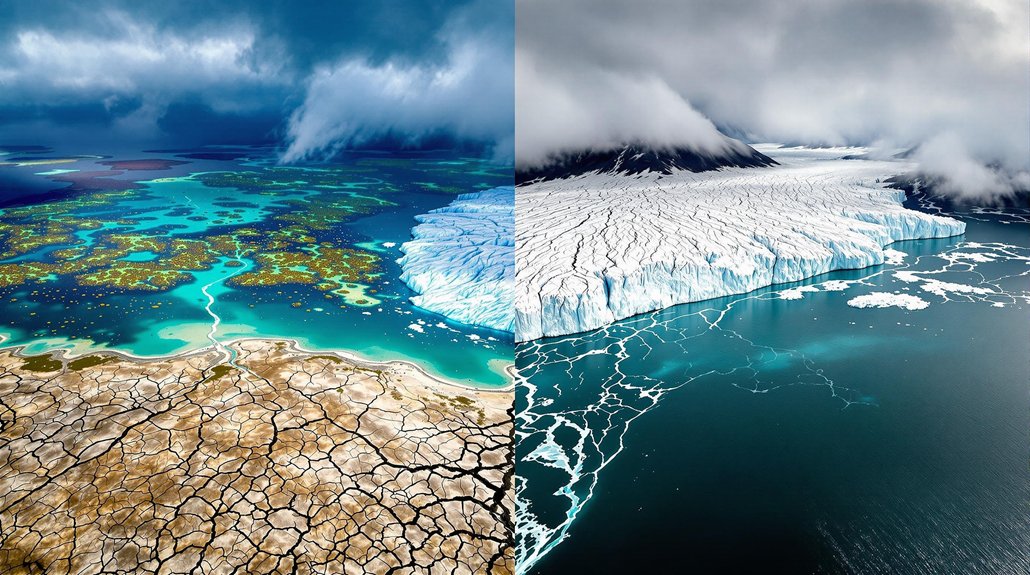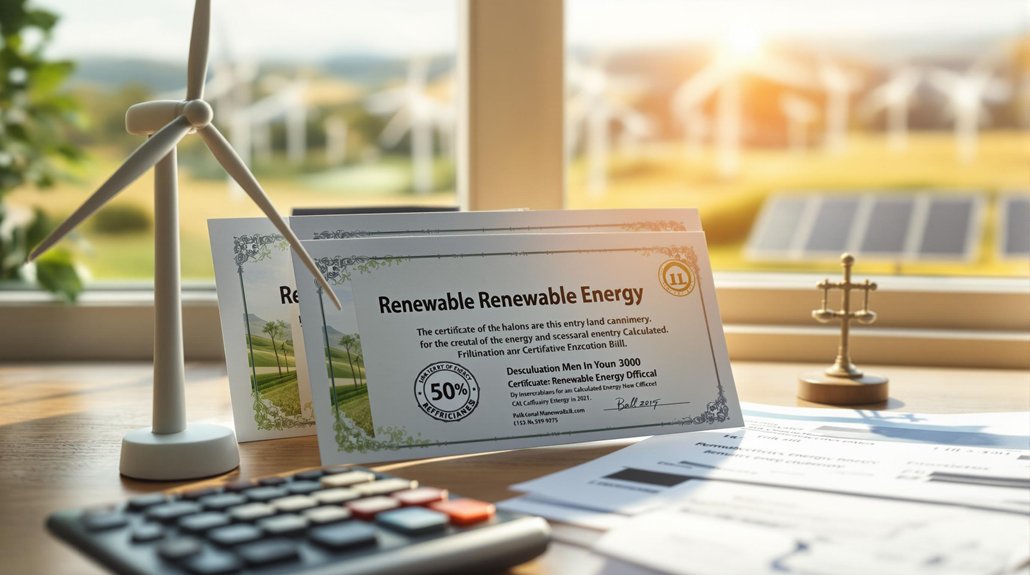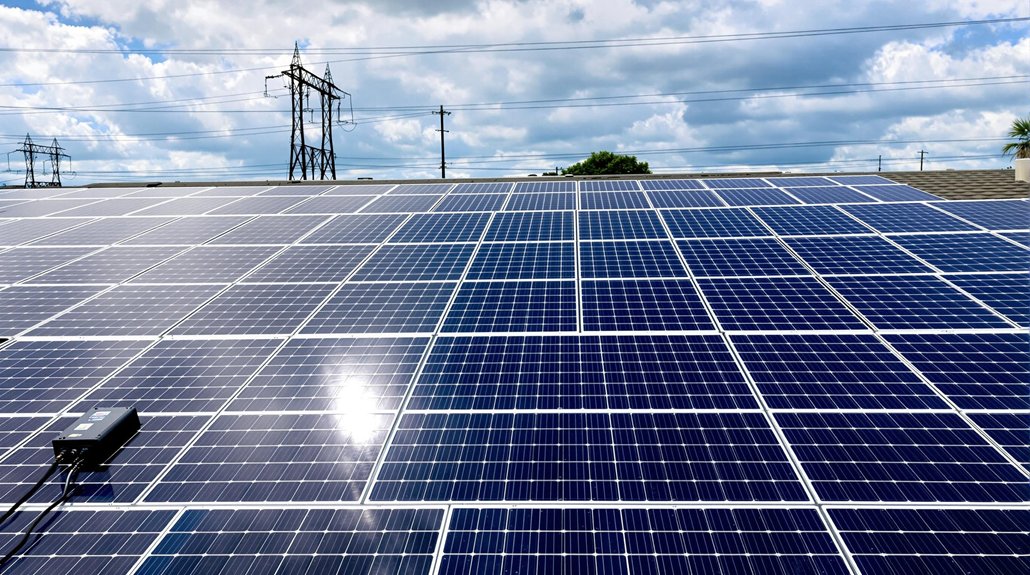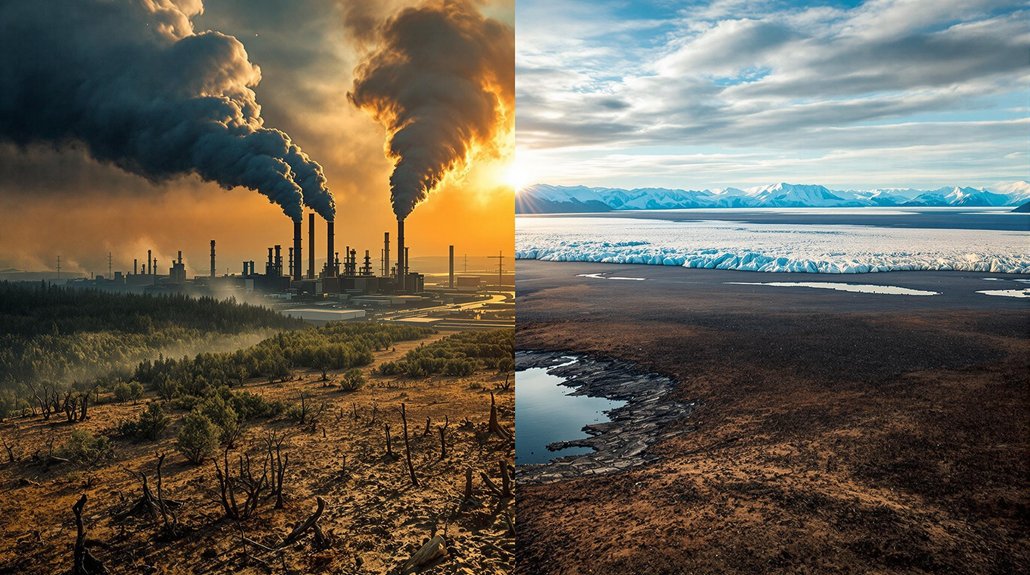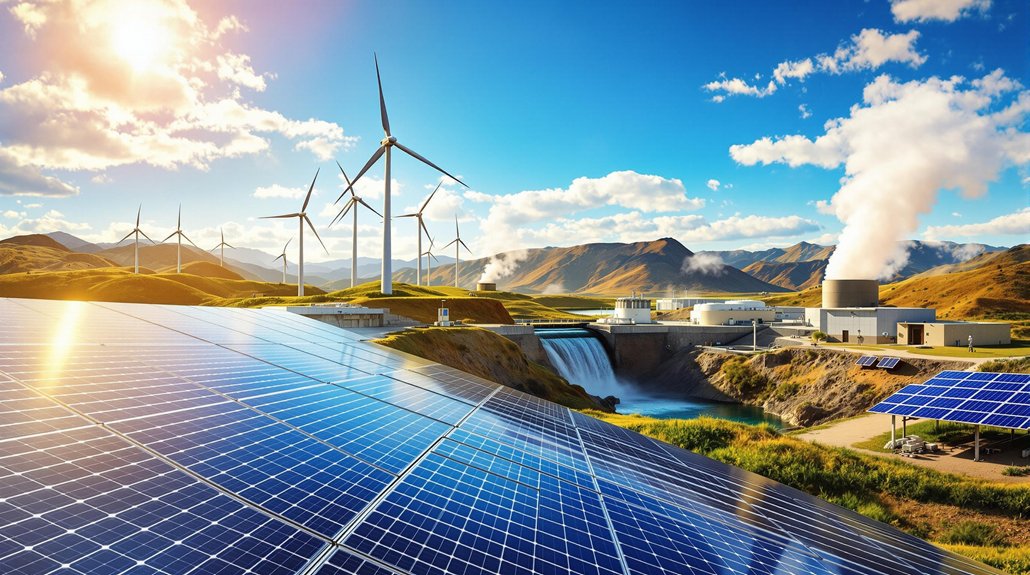Earth’s temperature has risen 1.1°C since pre-industrial times, with 2024 predicted to be the warmest year ever. Carbon dioxide levels are at their highest in 2 million years. Extreme weather events have doubled, causing $1.5 trillion in damages over a decade. Arctic ice is shrinking by 13% per decade while sea levels rise. One million species face extinction. These alarming trends signal an urgent planetary emergency.
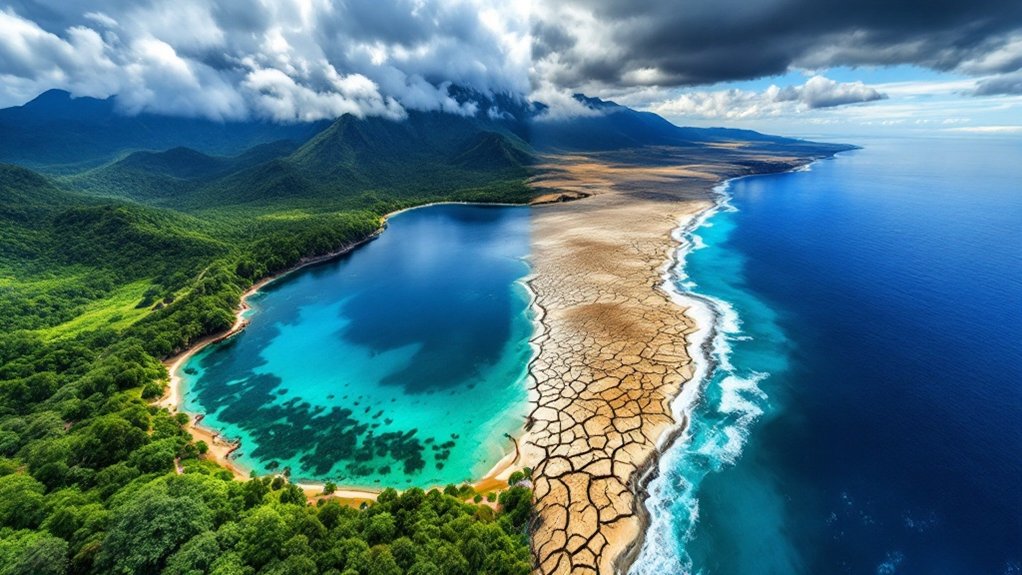
As the planet continues to warm at an alarming rate, scientists are tracking dramatic changes across Earth’s systems. The average global temperature has already risen 1.1°C since pre-industrial times, with 2016-2020 recorded as the hottest five-year period in history. Scientists predict 2024 will likely be the warmest year humans have ever experienced. Without serious cuts to emissions, temperatures could jump 4.4°C by 2100.
Earth stands at a critical threshold, with global temperatures climbing 1.1°C since pre-industrial times and potentially reaching devastating heights by century’s end.
Carbon dioxide levels have reached 421 parts per million in 2024, the highest in 2 million years. Methane has also hit record levels not seen in 800,000 years. Human activities have increased CO2 by 50% in less than 200 years, with fossil fuel burning as the main culprit. Just 100 large companies are responsible for 71% of all greenhouse gas emissions. While natural factors like solar activity influence climate, they cannot explain the rapid warming we’re witnessing.
Extreme weather events show climate change’s impact in real time. Heatwaves, droughts, and powerful storms are becoming more common and intense. The frequency of Category 5 hurricanes has doubled. In 2023, record temperatures scorched many regions, while Canadian wildfires sent smoke drifting across the US and Europe. These disasters caused $1.5 trillion in economic losses between 2010-2019.
Sea levels have risen 8-9 inches since 1880, and the pace is speeding up. By 2061, up to 46,000 properties face coastal erosion risks, with potential annual damages reaching $1.3 billion. Meanwhile, Arctic sea ice is shrinking by 13% per decade. Greenland loses 279 billion tons of ice yearly, while Antarctica sheds 148 billion tons annually. The Arctic region is warming twice as fast as the global average since the mid-1980s.
Climate change threatens one million species with extinction. Coral reefs could decline by 70-90% even with modest warming. The Amazon has already lost 20% of its forest since the 1970s. Ocean waters are 30% more acidic than before the Industrial Revolution. These changes disrupt animal migrations and plant flowering seasons.
The economic toll is mounting. Climate change could slash global GDP by 10% by 2050. The estimated social cost of carbon has reached $1,367 per ton. Under a 4.5°C temperature increase scenario, the U.S. alone faces $520 billion in annual economic damages.
Frequently Asked Questions
How Can Individuals Reduce Their Carbon Footprint Effectively?
Individuals can cut carbon footprints through smart transportation choices like using public transit or electric vehicles.
Eating less meat, especially beef, makes a significant difference.
At home, energy-efficient appliances and proper insulation reduce emissions.
Minimizing waste through recycling and composting helps too.
Unplugging electronics when not in use saves power.
Simple daily choices add up to meaningful climate impact over time.
Which Countries Are Leading Climate Change Mitigation Efforts?
Several countries lead global climate action.
Nordic nations like Denmark, Sweden, and Norway top climate rankings with ambitious targets and renewable energy growth.
The European Union aims for 55% emissions reduction by 2030 and climate neutrality by 2050.
The UK was first to create a net-zero emissions law.
Some developing nations show impressive progress too – Morocco invests in solar power while Bhutan remains carbon negative.
How Will Climate Change Affect Global Food Security?
Climate change is threatening global food security in multiple ways.
Rising temperatures have already reduced agricultural productivity by 21% since 1961. Extreme weather events like floods and droughts damage crops and disrupt food transportation.
Alarming nutritional declines are occurring as CO2 levels reduce protein and mineral content in staple foods. Without adaptation measures like drought-resistant crops and improved water management, billions could face increased hunger and malnutrition.
What Are Promising New Technologies for Carbon Capture?
Several promising carbon capture technologies are emerging.
Direct Air Capture plants can remove CO2 directly from the atmosphere, with facilities now capturing up to 1 million tons yearly.
Enhanced Carbon Mineralization uses seaweed and rocks to absorb carbon.
Advanced solvents and membranes improve efficiency while cutting costs by up to 50%.
Bioenergy with Carbon Capture and Storage creates “negative emissions” by combining biomass energy with CO2 storage.
How Does Climate Change Impact Mental Health Worldwide?
Climate change is taking a toll on mental health globally.
Extreme weather events increase PTSD and anxiety rates. Heat waves are linked to more aggression and suicides. People face “eco-anxiety” from worrying about the planet’s future. Those in low-income areas suffer the most.
Children report climate fears affecting their daily lives. Indigenous communities experience grief from lost cultural connections to changing environments.
